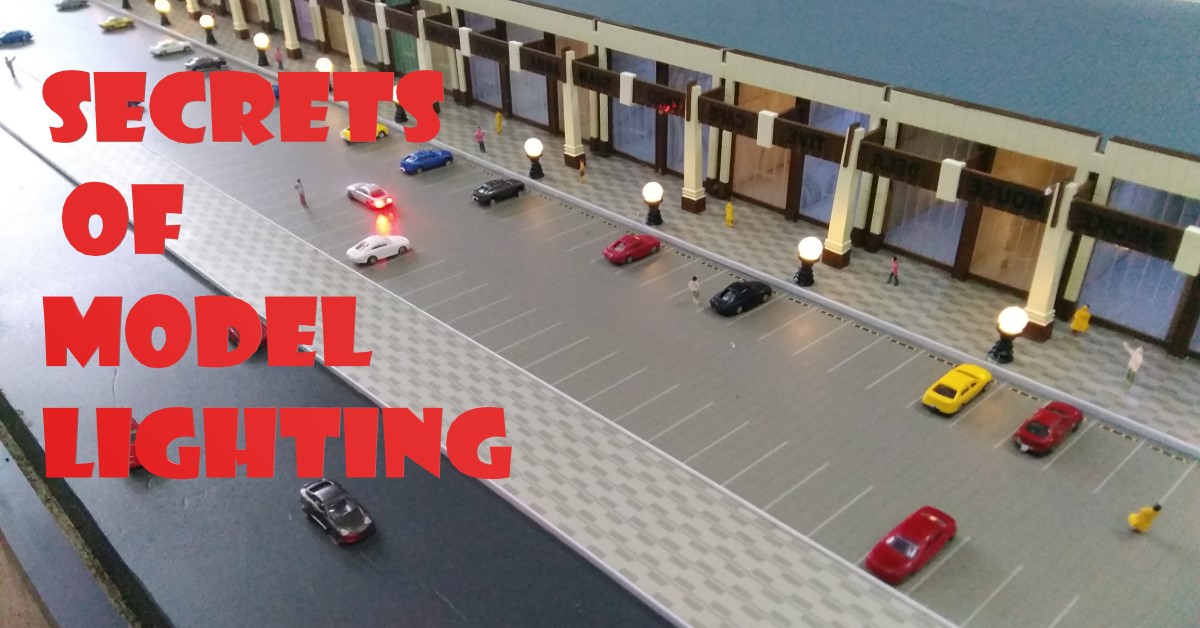Wiring for Model train layout is very important because proper electrical work gives life to your model layout. Model lighting solutions represents of real-world landscapes. It involves trains, buildings, and landscapes. To make these miniature worlds functional, a robust wiring and electronics system is essential. This system controls train movements, signals, lighting, and other interactive elements, creating a dynamic and realistic experience.
Model lighting solutions
Power Supply
The heart of any model train layout is its power supply. Most layouts utilize direct current (DC) or Digital Command Control (DCC). DC systems supply constant voltage to the tracks, controlling the speed and direction of trains. DCC, on the other hand, allows independent control of multiple trains on the same track by encoding digital information into the power supply.
Track Wiring
Tracks are the pathways for the trains and form the foundation of the layout. Wiring tracks involves dividing them into blocks, each with its own power feed. This enables independent control of multiple trains on the same track without interference.
Bus Wiring
A bus is a main power distribution line that runs beneath the layout, connecting to each block’s power feed. Bus wiring ensures a consistent power supply across the layout, preventing voltage drops and ensuring smooth train operations.
Electronics for Model Train Control 12V
Turnouts and Switches
Turnouts or switches are essential for guiding trains onto different tracks. Switches plays an important role in wiring for model train layout. These are often motorized and controlled electronically. Wiring these devices allows for remote operation, enhancing the layout’s interactivity.
Block Detection
To achieve realistic operations and prevent collisions, block detection systems are implemented. These systems use sensors to detect the presence of trains in specific sections of the layout. When a block is occupied, the system signals is the control system to adjust train movements accordingly.
Signals and Lights
Incorporating signals and lights adds realism to the layout. Wiring for these elements involves connecting them to the control system, allowing synchronized operation. Signals indicate whether a track is occupied, adding an extra layer of realism to train operations. Signal system is most important part in wiring for model train layout.
Advanced Electronics
Sound Systems
For an immersive experience, model train enthusiasts often integrate sound systems. These systems simulate the sounds of real trains, including engine noises, whistles, and braking sounds. Wiring these systems involves connecting speakers to the control system.
Automation
Automation in model train layouts involves using sensors, microcontrollers, and computer interfaces to control various aspects automatically. This can include train movements, turnouts, and even scenery elements. Wiring for automation requires careful planning to ensure seamless integration.
Image showing schema of DCC installation: Image by Prez and Creative Commons

Computer Control
Modern model train layouts often incorporate computer control systems. These systems allow enthusiasts to control multiple trains simultaneously, program intricate routes, and synchronize various layout elements. Wiring for computer control involves connecting sensors, actuators, and the layout’s central control unit to the computer interface.
Tips for Efficient Wiring
1. Plan Before You Start : A well-thought-out wiring plan is crucial. Consider the layout’s size, the number of trains, and desired features before starting the wiring process.
2. Label Everything : Proper labeling simplifies troubleshooting and maintenance. Clearly mark each wire, connector, and component for easy identification.
3. Use Color-Coded Wires : Color-coding wires simplifies the wiring process and helps identify connections at a glance. Stick to a consistent color scheme for power, ground, and various signals.
4. Organize Wiring Beneath the Layout : Keep the wiring underneath the layout neat and organized. Use cable organizers, tie wraps, and conduits to prevent a tangled mess and facilitate future modifications.
5. Test Continuously : Regularly test each section of the layout during the wiring process. This helps identify and address issues before the entire layout is complete.
6. Document Your Wiring Plan: Create a comprehensive wiring diagram or documentation. This serves as a reference for future modifications or troubleshooting.
Watch this video – Wiring for Model train layout
Are you new in Train model Layout ? to start a new Layout click here
